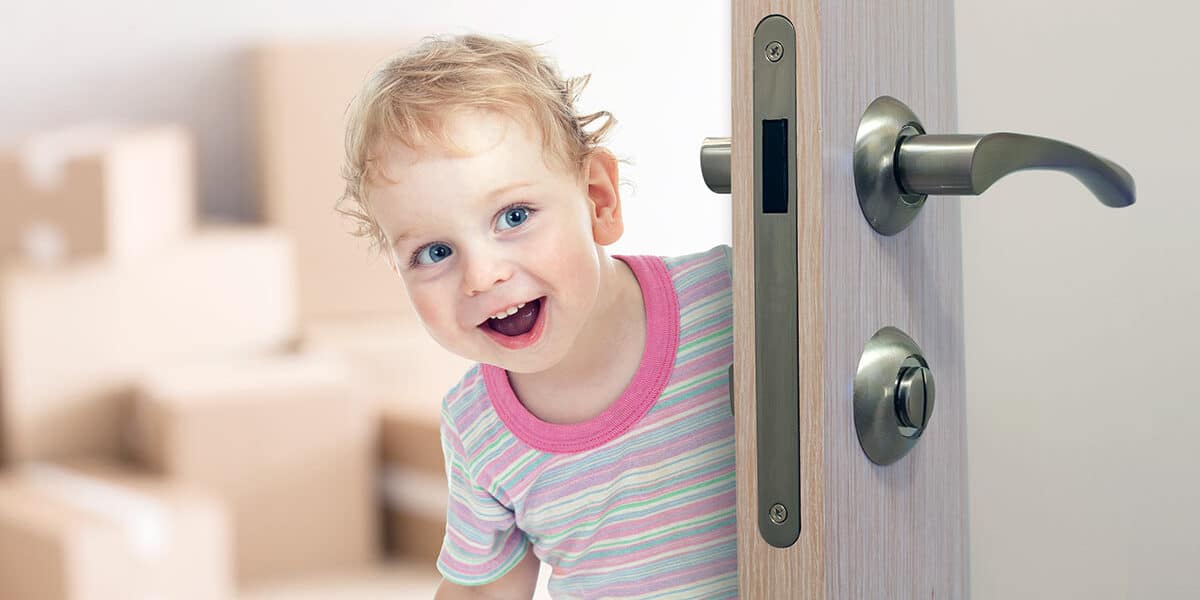Why use a door safety lock? They can be used to prevent children from wandering outside, as well as to keep them safely contained in a room or area.
Child safety locks for doors are devices designed to prevent children from opening or closing doors. They typically work by limiting the movement of the door handle or lock.
These locks are flexible in terms of use. They can be installed on both the inside and outside of a door, and can be activated or deactivated as needed. Some child safety locks are mechanical, while others are electronic and can be controlled remotely.
Read on to find out more about child safety door locks.
Why Parents Need Child Safety Locks
If your child being able to get through a doorway causes problems, a safety lock is an easy solution. Parents often use child safety locks to prevent a young child from accidentally or intentionally opening a door and wandering outside, which can be a safety hazard.
Child safety locks can also be used to keep children contained in a room or area, such as a playroom or bedroom. This can provide a sense of security for both the child and the parent.
Additionally, child safety locks can be used to restrict access to certain rooms or areas of the house, such as the kitchen or garage. These no-go zones may contain potential hazards such as sharp objects or chemicals.
Dangers from a Child Wandering Outside
A young child wandering outside without adult supervision is a source of alarm for most parents. And there are good reasons for these instinctive fears.
One major concern is that the child may get lost. When a child gets lost, it can be a very stressful for all involved and a dangerous situation for the child. If your child wanders away, it’s important to act quickly and stay calm. Check nearby parks, playgrounds, and other places the child is known to frequent. Notify the police and provide them with a recent photo and a detailed description of the child, including what they were wearing.
Children can easily wander into dangerous areas, such as a busy street or construction site. They may also be at risk of abduction or harm from strangers. Additionally, a child may not be able to recognize or respond to potential hazards, such as traffic, wild animals or an unleashed dog. They may also be unable to understand or follow basic safety rules, such as not talking to strangers.
All the risks are compounded by children’s natural curiosity and lack of understanding of the dangers present outside the home. A young child is vulnerable when outside and alone.
1. Door Knob Cover
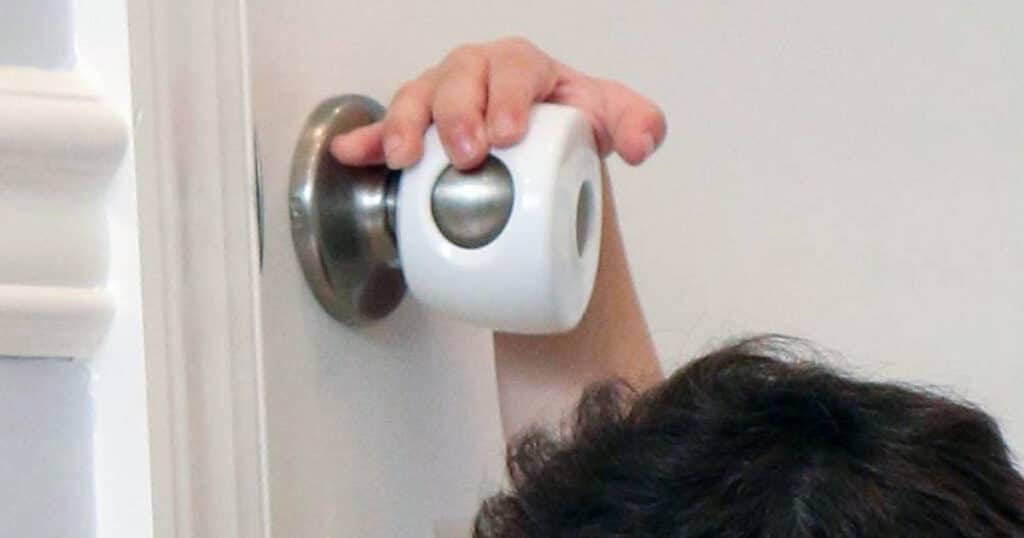
A door knob cover fits over the door knob to make it difficult for children to turn the knob and open the door. They can be used on both the inside and outside of a door.
Pros of door knob covers
- Relatively inexpensive and easy to install.
- Simple and straightforward solution for preventing children from opening a door.
- Can be used on any type of door knob, including round and lever-style knobs.
Cons of using door knob covers
- May be less secure then other types of locks. Determined children may still be able to remove them or open the door using other means.
- Difficult for adults to use, especially if they have limited dexterity or mobility.
- They may look unsightly even if the cover is transparent in color.
2. Lever Handle Lock
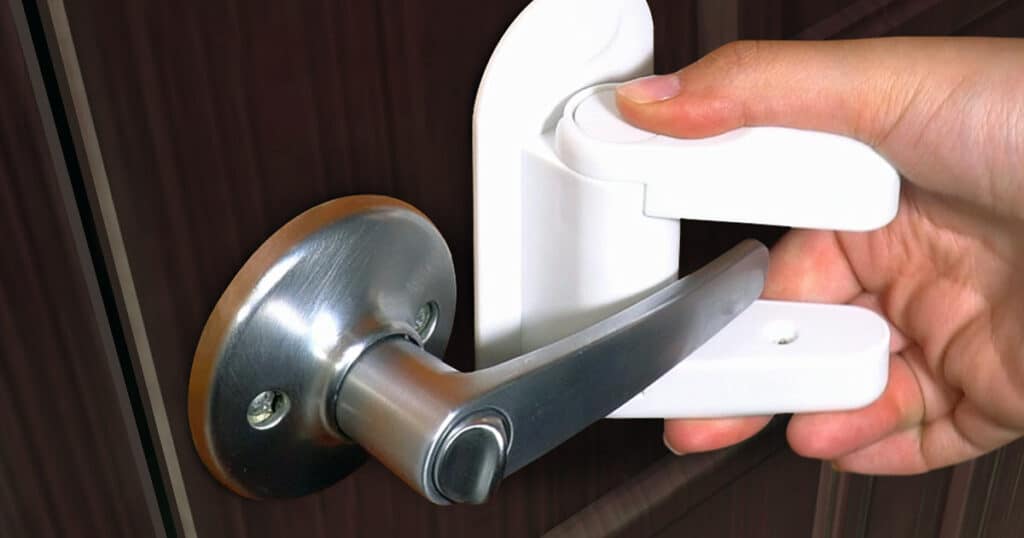
Lever handle locks fit over the lever handle of a door and prevent the handle from being depressed, making it difficult to open the door. They can be used on both the inside and outside of a door.
Pros of using lever handle locks
- Relatively inexpensive and easy to install.
- Simple and straightforward solution for preventing children from opening a door.
Cons of using lever handle locks
- May not be as secure as other types of locks.
- May be difficult for some adults to use who have limited dexterity or mobility.
- Not visually appealing.
3. Sliding Door Lock
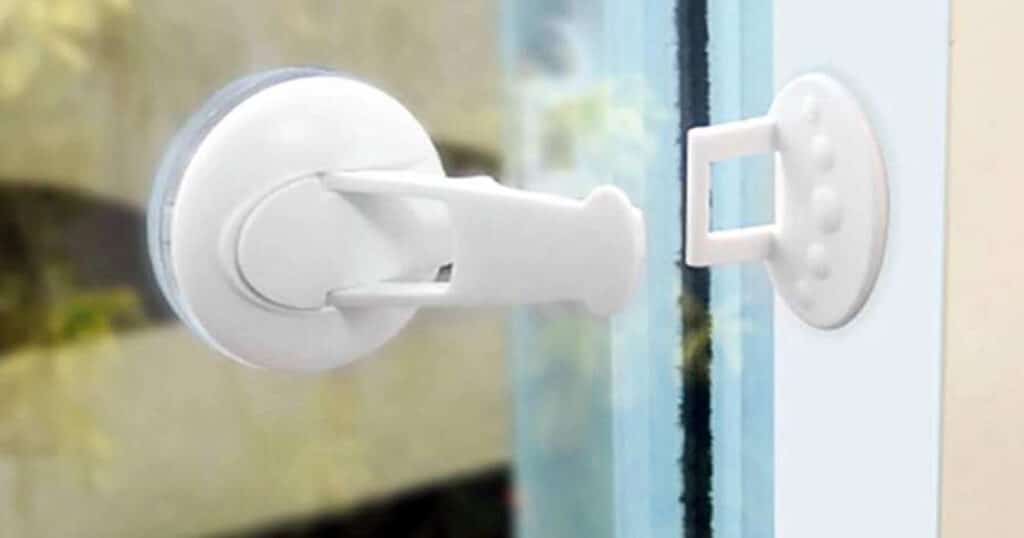
Sliding door locks are designed to be placed on sliding doors and prevent the door from being opened. They can be installed on the inside or outside of the sliding door and can be used on glass, wood, or metal doors.
Pros of using sliding door locks
- Relatively inexpensive and easy to install.
- Can often be placed at any height.
- Provide an extra layer of security for sliding doors, which can be easier for children to open than other types of doors.
Cons of sliding door locks
- Some types are not compatible with all types of sliding door tracks.
4. Magnetic Cabinet Lock

Magnetic cabinet locks use a magnetic key to unlock cabinets and drawers, keeping children from accessing potentially dangerous items. The lock is installed inside the cabinet or drawer, and the magnetic key is used to unlock it from the outside.
Pros of using magnetic cabinet locks
- Relatively inexpensive and easy to install.
- A discreet solution for keeping children out of cabinets and drawers, as the lock is hidden from view.
- Versatile and can be used on a variety of different types of cabinets and drawers.
Cons of magnetic cabinet locks
- Require the use of a magnetic key to unlock, which can be misplaced or lost.
- May not be suitable for all types of cabinets and drawers, especially those with a complex design or shape.
- May not be compatible with all types of cabinet door or drawer handles.
5. Electronic Cabinet Lock
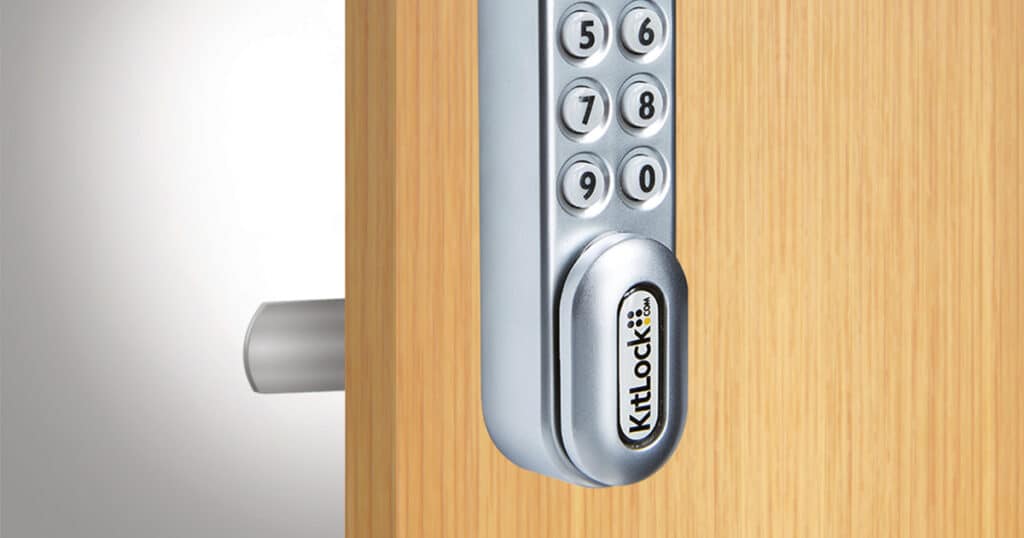
Electronic cabinet locks use a code or keycard to unlock cabinets and drawers. They can be controlled remotely and can provide a more secure lock for specific rooms or areas of the house.
Pros of using electronic cabinet locks
- Provides a higher level of security than other types of locks, as the lock can be controlled remotely and the code or keycard can be changed as needed.
- Restricts access to specific rooms or areas of the house, such as a home office or a garage.
- Can be programmed with multiple codes or keycards, allowing multiple people access to the locked area.
Cons of electronic cabinet locks
- More expensive than other types of locks.
- Require a power source, such as batteries or an outlet, to operate.
- May not be suitable for all types of cabinets and drawers, especially those with a complex design or shape.
- May not be compatible with all types of cabinet door or drawer handles.
- Can be affected by power outages or low battery, which could make the lock inoperable.
Guardian Lock

The Door Guardian is a latch that installs on the inside of the door and attaches to the door frame. It does not cover the door knob or lever and it does not prevent it from being turned. Instead, it uses a patented pin-locking mechanism that attaches to the door frame and prevents the door from opening even if the door knob or lever is turned. The Door Guardian is suitable for inward-swinging doors, but it will not be suitable for outward-swinging doors.
Pros of using the Door Guardian
- Relatively easy to install, and does not require any drilling or screws.
- Uses a patented pin-locking mechanism that attaches to the door frame, providing a secure and tamper-proof lock.
- Opened easily by adults in case of emergency.
Cons of the Door Guardian
- Not suitable for outward-swinging doors.
- Difficult to use for people with limited dexterity or mobility.
- May not be as secure as other types of locks, especially if the door frame is not strong or stable enough.
- It may not be compatible with all types of door frames.

